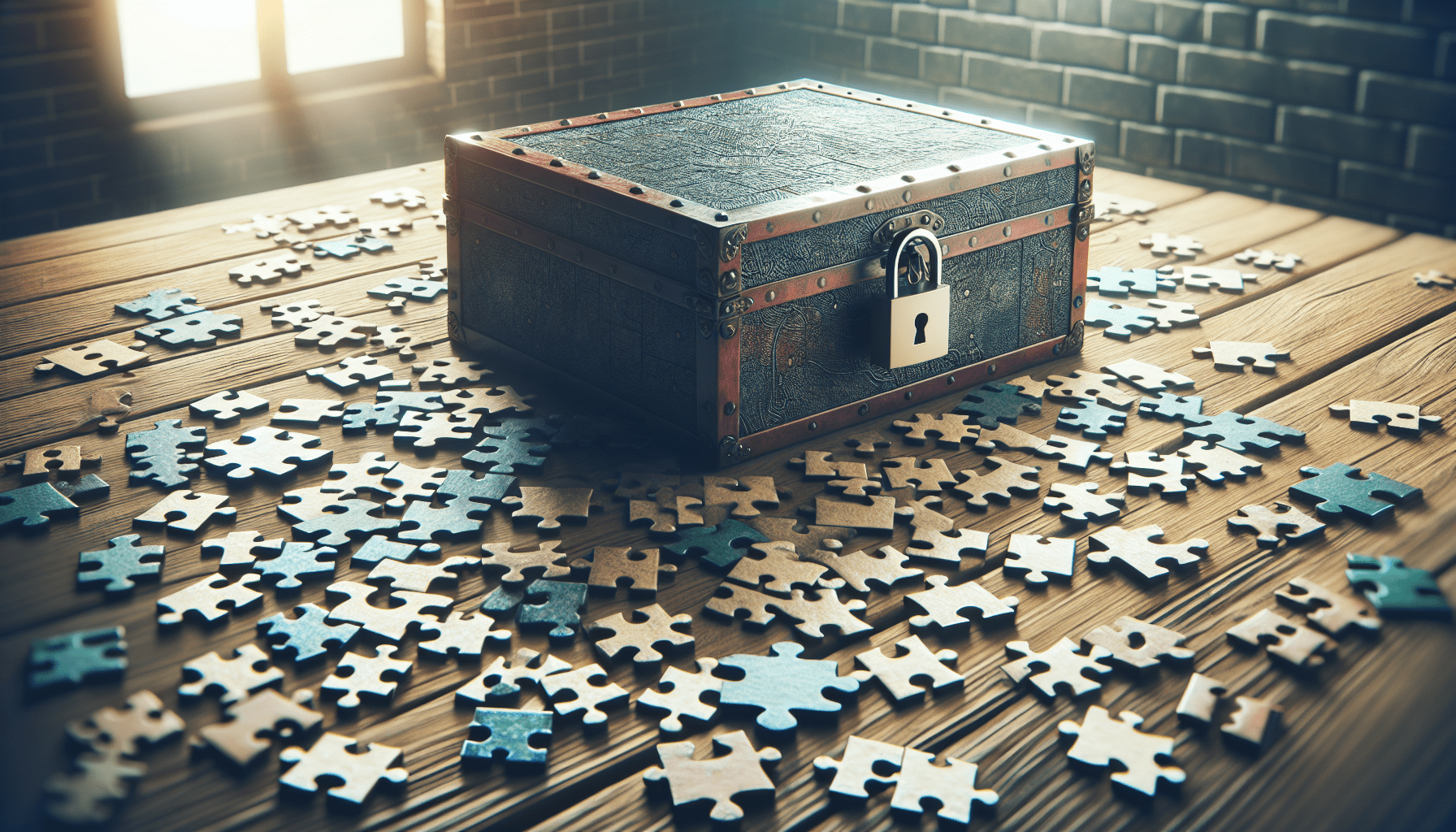Welcome to the world of escape rooms! If you’ve ever wondered just how many puzzles you can expect to find in an average escape room, you’re not alone. The average escape room typically contains anywhere from 3 to 5 puzzles, each designed to challenge your problem-solving skills and creativity. From deciphering codes to uncovering hidden clues, get ready to put your brain to the test in an exciting race against the clock. So gather your team, sharpen your wits, and get ready to escape! How Many Puzzles Does The Average Escape Room Have?
Have you ever wondered how many puzzles you’ll need to solve in an escape room? Let’s dive into the world of escape rooms and explore the average number of puzzles you can typically expect to encounter in these thrilling and immersive experiences.
What is an Escape Room?
Escape rooms have become increasingly popular in recent years as a form of entertainment where groups of people are locked in a room and must solve a series of puzzles and challenges to “escape” within a set time limit, typically 60 minutes. These puzzles can vary in complexity and theme, ranging from math problems and riddles to physical challenges and decoding cryptic messages.
Average Number of Puzzles
The number of puzzles in an escape room can vary depending on the size and complexity of the room. On average, you can expect to encounter anywhere from 8 to 12 puzzles in a typical escape room. This number can fluctuate based on the difficulty level of the room and the theme of the puzzles.
Small Rooms
In smaller escape rooms designed for 2-4 people, you may find around 8-10 puzzles to solve. These rooms are often more intimate and can provide a more challenging experience as participants have to work together closely to solve the puzzles in a limited space.
Large Rooms
For larger escape rooms that accommodate 6-8 people or more, you may encounter a higher number of puzzles, usually ranging from 10 to 12 or even more. These rooms can be more elaborate and feature a wider variety of puzzle types to keep everyone engaged.
Types of Puzzles
Escape rooms often incorporate a variety of puzzle types to cater to different skill sets and interests. Here are some common types of puzzles you may encounter in an escape room:
Logic Puzzles
Logic puzzles require you to think critically and use deductive reasoning to solve them. These puzzles can include Sudoku, pattern recognition, or grid-based challenges that test your ability to think outside the box.
Word Puzzles
Word puzzles involve solving riddles, anagrams, or cryptic messages by deciphering clues and piecing together words or phrases. These puzzles can be both fun and challenging for participants with strong language skills.
Physical Challenges
Physical challenges may require you to manipulate objects, navigate obstacles, or solve tasks that involve a hands-on approach. These puzzles can be more interactive and immersive, adding an extra layer of excitement to the escape room experience.
Math Puzzles
Math puzzles involve solving numerical problems or equations to progress through the room. These puzzles can test your arithmetic skills, problem-solving abilities, and ability to work with numbers under pressure.
Observation Puzzles
Observation puzzles require you to pay close attention to details, patterns, or hidden clues within the room. These puzzles can be tricky but rewarding for participants who are detail-oriented and observant.
Puzzle Difficulty Levels
Escape rooms typically offer a range of difficulty levels to accommodate different skill levels and preferences. Here are some common difficulty levels you may encounter in escape rooms:
Easy
Easy difficulty levels are designed for beginners or groups looking for a more casual and relaxed experience. These rooms may feature straightforward puzzles with clear instructions and simple solutions to help participants feel successful and engaged.
Medium
Medium difficulty levels offer a balanced mix of puzzles that provide a moderate challenge without being too overwhelming. These rooms may have a variety of puzzle types that require a bit more critical thinking and teamwork to solve.
Hard
Hard difficulty levels are designed for experienced players or groups seeking a more challenging and immersive experience. These rooms may feature complex puzzles, hidden clues, and time-sensitive challenges that require advanced problem-solving skills and teamwork to overcome.
Expert
Expert difficulty levels are for hardcore enthusiasts or thrill-seekers looking for the ultimate challenge. These rooms may push the limits of participants’ skills and teamwork, featuring intricate puzzles, elaborate mechanisms, and intense pressure to escape within the time limit.
Tips for Solving Puzzles
If you’re new to escape rooms or looking to improve your puzzle-solving skills, here are some tips to help you navigate the challenges and unlock your full potential:
- Communicate and collaborate with your team members to share ideas, observations, and solutions.
- Divide and conquer by assigning roles or tasks based on each team member’s strengths and interests.
- Think outside the box and consider unconventional approaches or perspectives to solve tricky puzzles.
- Keep track of clues and hints provided throughout the room to piece together the puzzle solutions.
- Stay calm and focused under pressure, especially in time-sensitive situations where quick thinking is essential.
Conclusion
The average escape room typically contains around 8 to 12 puzzles, ranging in difficulty and variety to provide a challenging and engaging experience. By understanding the types of puzzles, difficulty levels, and tips for solving them, you can enhance your escape room adventures and make the most of your time with friends, family, or coworkers. So gather your team, sharpen your wits, and prepare to unlock the secrets of the escape room – one puzzle at a time!
